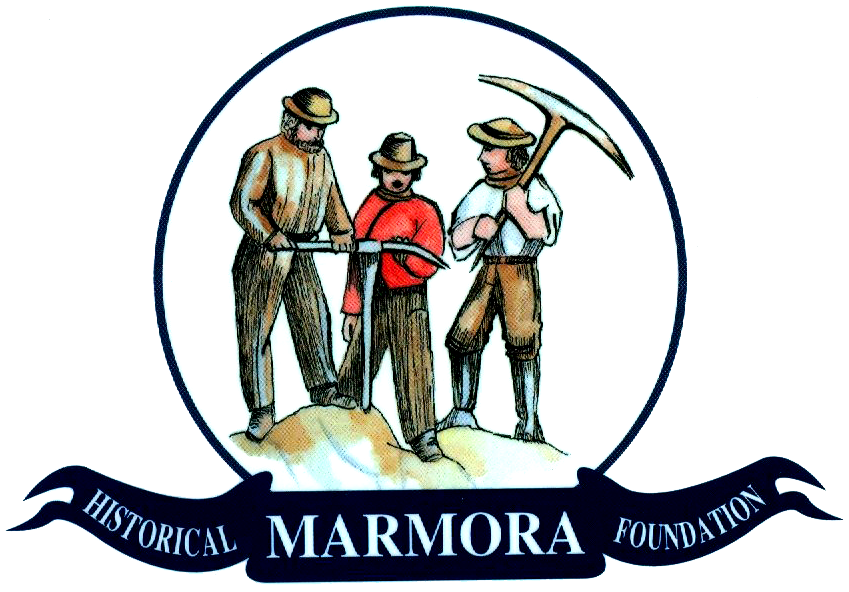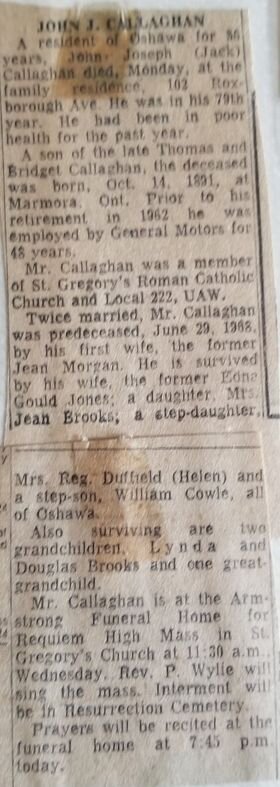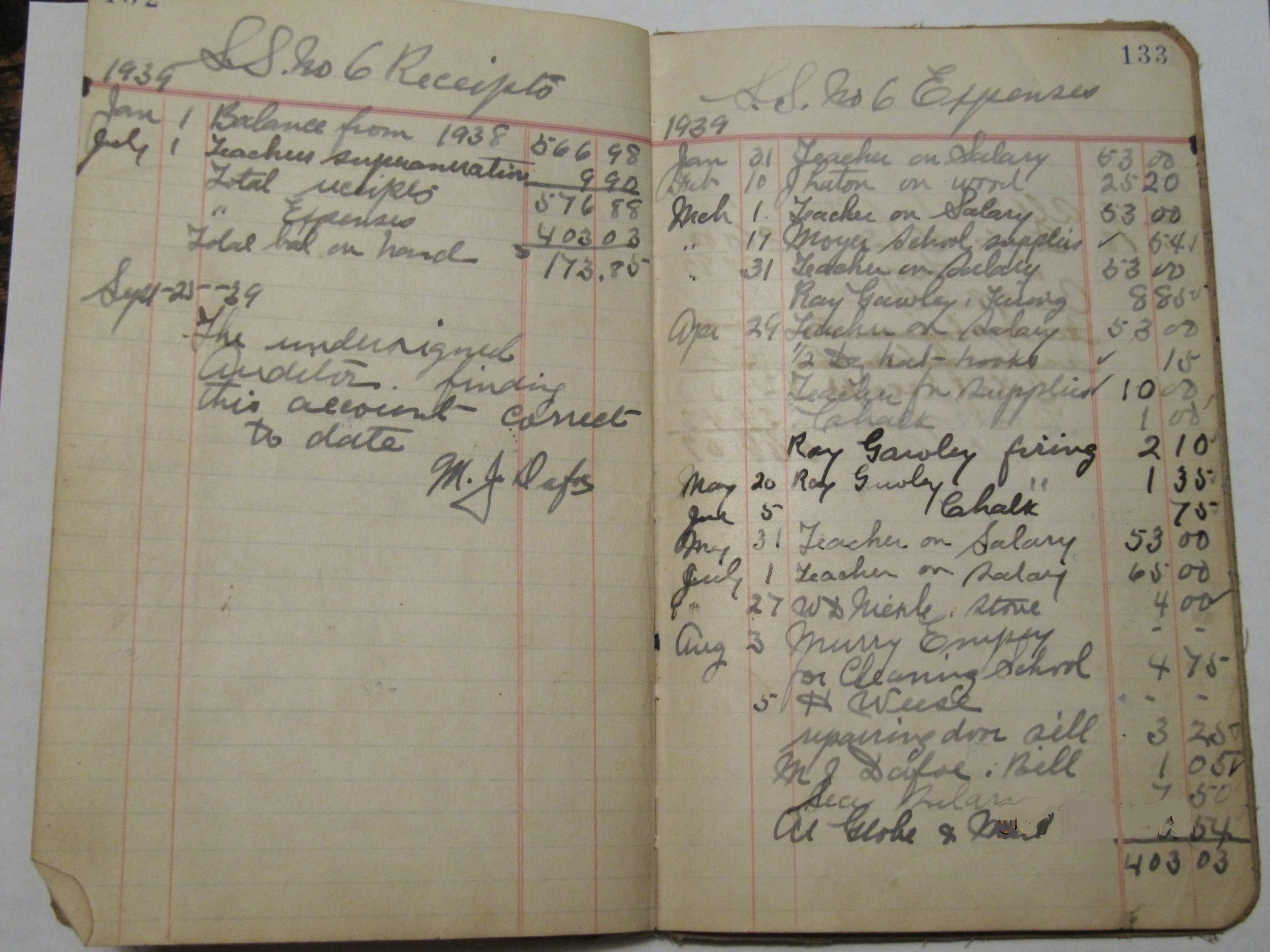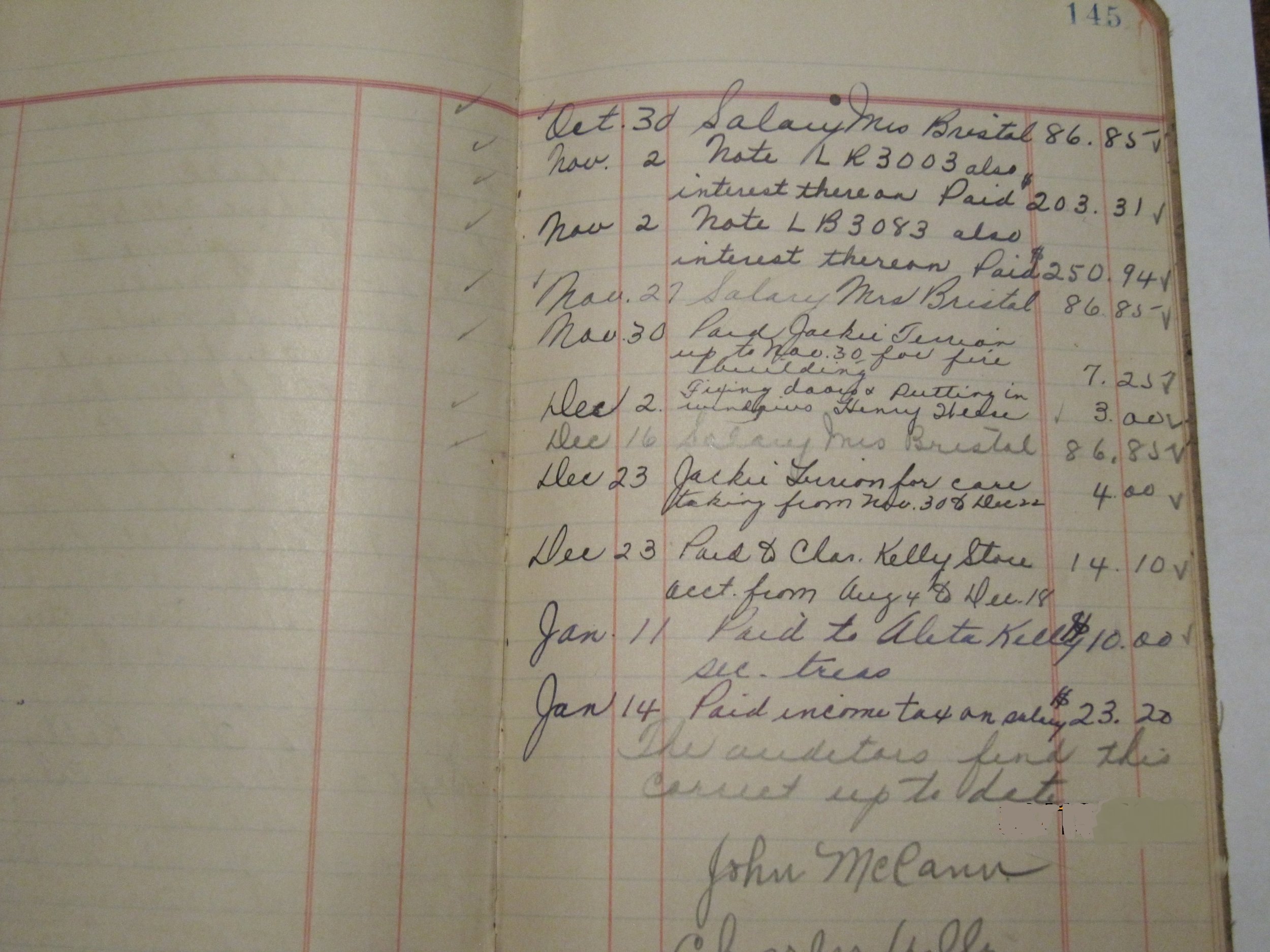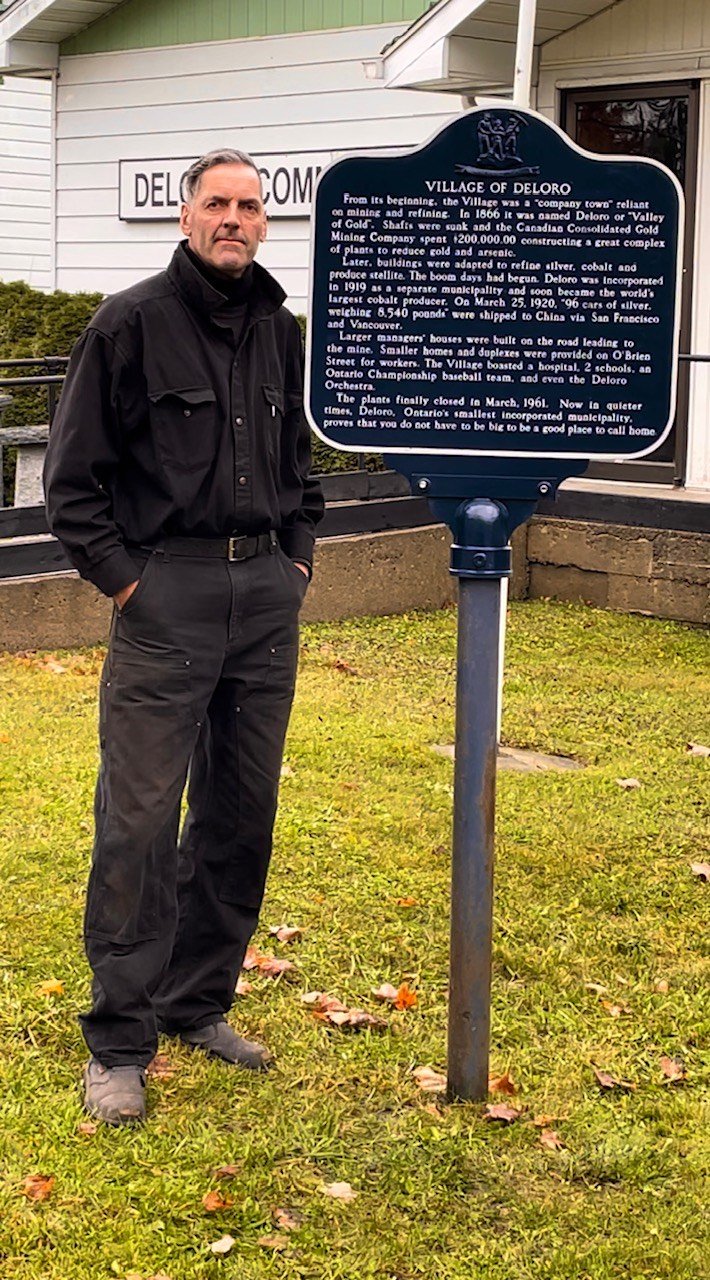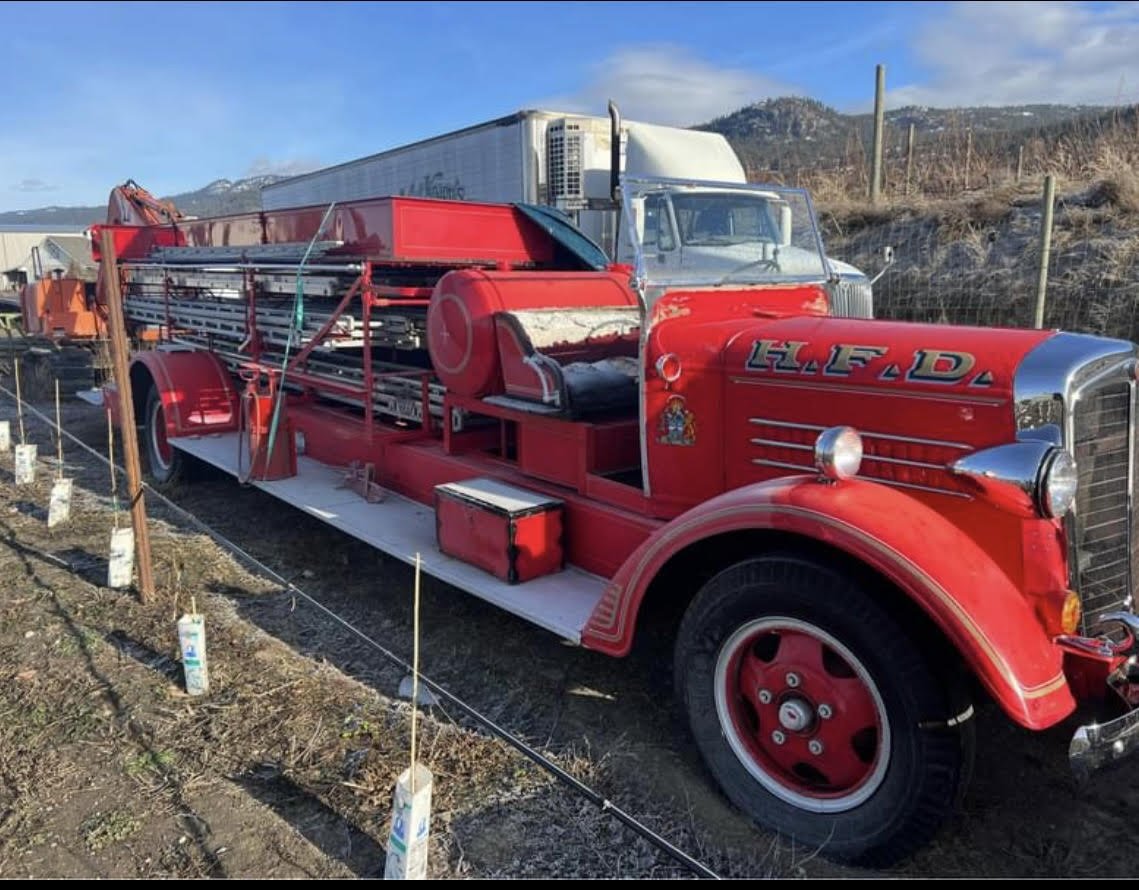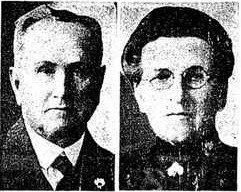REMEMBERING THE MILKMAN
/Luckily for us, Joy Neal Lynch, daughter of ‘Cec’ (Remember the Milk Man?) and Verna Neal, has written about her parents, making us take the time to reflect on how times have changed.
.
“Cecil Neal was born July 13, 1919, in Marmora Township; the fourth of eight children born to Mary Ann (McFaul) Neal and Linday Neal, owner of a dairy business.. They lived on a farm South of Marmora. My father took over the dairy business owned by his father circa 1940. On August 18, 1943 dad married my mom, Verna Davidson. The wedding took place at St. Paul’s Anglican Church, Marmora. The Reverend A.B. Caldwell performed the ceremony with Margaret Davidson as the Maiden of Honour and Victor Neal the Best Man.
Mom was born on May 4, 1914, in Millbridge, Ontario; the fifth of eleven children born to John and Bertha (McGregor) Davidson. They grew up in Millbridge. Mom worked as receptionist for Dr. Nichol in Madoc. After moving to Marmora, mom worked as a switchboard operator in the Bell dispatch office, located across the road from us, until 1945.
In 1944, mom and dad purchased the house and property at 8 McGill Street, Marmora. The property, that included a large barn, was originally the site of the Pringle Hotel, one of four Marmora hotels in the early 1900’s. The barn was probably used to stable customer horses and perhaps a cow for milk and chickens for eggs and eating.
The hotel was destroyed by fire on May 24, 1914. The property was purchased by Wm. Flynn and construction began immediately. The Flynn family moved in the fall of 1914. The house was subsequently occupied by the Woodhouse family until 1918 and then the Earl Prentice family until mom and dad purchased it.
Verna with Jane and Cecil with Anne 1946
Cecil and verna Neal 1944
Joy with Judy and Neal’s truck, 1955
Mom and dad raised a family of four children: Anne, Jane, Joy and Judy. Our four-bedroom two storey house was on a large property that included the two-storey barn, a huge garden and three apple trees. We also had a wonderful well that many in the neighborhood used as their source of drinking water.
In 1954 dad constructed a new dairy building on the south west corner of our property with the front bordering right on the street sidewalk, known as 6 McGill Street.
Until 1986 he remained everyone’s favorite milkman.
Dad joined the Marmora Fire Department in 1935 (age 15) and was appointed Fire Chief in 1961. In addition to our family phone, we also had the fire phone. All fire calls came directly to that phone and usually mom was the one to answer it. She had to then remotely activate the fire siren at the station and call the appropriate number of fire fighters, as well as try to locate dad. He would normally be delivering milk, but would hear the siren and head directly to the fire hall, often being the first to arrive. It was not unusual for a couple of nosey people to call in on the fire phone to ask mom where the fire was.
Dad was a founding member of the Hastings/Prince Edward Mutual Aid System. He also sat on the Public-School Board for 17 years, and in the late fifties, he purchased a local “Dairy Freeze” business across from the fire hall. It featured soft ice cream creations as well as hamburgers, hot dogs and fries. It was operated by Anne, Jane, Joy, Judy and on occasion dad. It was a good business that provided an excellent supplement for the girls’ education.
Dad was diagnosed with Non-Hodgkin’s Lymphoma in 1988 and he retired in 1989. Following a short remission, complications with pneumonia set in and he died in Kingston General Hospital on November 9th, 1990. His cancer was almost certainly related to his many years on the fire department and inhaling toxic fumes, especially in the early years, when respirators were not worn. He received an honor guard funeral and his casket was transported to the graveyard atop a pumper fire truck.
Mom remained in the house for another 10 years. She did quite well on her own despite never having driven a car. She was well supported by neighbours, friends and family. In 2000, she had a fall on the back step that ultimately lead to her being hospitalized and having to leave the house. She moved to the Bayview Retirement Home in Belleville and also did quite well there. Six years later, on September 6th, 2006, she died from natural causes in the Belleville Hospital. They are both buried in the Marmora Common Cemetery.”
Cecil and Verna Retirement 1989 Judy, Joy, Jane and Anne
MEMORIES
BARB CALFAS-DUFF My parents, Cathy and Len Callfas, bought a farm in Bonarlaw in 1969. There was a cement “chiller”built into the floor of a small building near the house…the milk cans, filled with cream, were placed in the cement holder and cold, well water would flow in and out to keep the cream cold.
In the dirt around the storage building, we used to dig up the circular discs with “Neal’s Dairy” stamped on it, . We later found out that the farm was where the cream was stored for Neal’s Dairy
PAMELA PHILLIPS: I spent a lot of time at the "Neal house" "Playing with either Jane or Joy. I was often invited for supper at that big long table in the kitchen. It was always a great meal as Verna was a good cook. One time Verna asked Cec to get a chicken for dinner (which I was supposed to attend) He grabbed the chicken and chopped off his head and the bird continued to run around te yard for 10 minutes. I didn't stay for dinner that night, I went home and recounted the incident to my Mom and Dad who had a good laugh over it. So many great memories of that family.
SALLY NEAL It is so lovely to read these stories and learn more of there lives. I am fortunate to be related to the 'Milkman'. Uncle Cec & Aunt Verna were true pillars of the community. They are still remembered fondly when my siblings & I gather and we share stories of our youth. Thank you for a pleasant trip down memory lane.
SHARON VESTERFELT: I remember this day so well.....I was talking on the phone and out of the corner of my eye, I saw a blaze of light. I checked and our son Blair, who was only about 4 or 5 had lit a dried flower arrangement on fire in the front window with a lighter. I dropped the phone and grabbed water and immediately doused the fire. It sure scared us. Cec came to deliver our milk right around the same time and thought he had better come in and check the fire scene. So on that day, at that time, Cec wore two hats as they say...Cec the milkman and Cec the fire chief. He was an amazing man in our community. I also remember helping Judy, one of my best friends, look after the Dairy, especially on the Saturday nights of our weekly dances at the town hall. During the bands breaks, we were swamped with orders for fries, hamburgers, and cones. Good times.
IRENE CLEMENS: I remember those days when Cec made home deliveries, He not only delivered in town but also in the country.
DALE YOUNG GORSLINE: I was just telling my husband about Cec and his milk deliveries a couple of days ago! Even though I'm under 50, I do remember him delivering a bag of milk to us once a week. Mom used to leave an envelope with cash in it, in a spot where he knew to look for it. I also remember when I was in grade 5, I collected money from all the classes at Earl Prentice each morning and gave him our daily milk order for the school. I was always trying to convince him to give us more chocolate milk in the order.
MARLEAN McLEAN: Cec and Verna Neal were like second grandparents to me when I was young. They were so kind and loving. Always made time for me, invited me over and made it seem like I was priority. I will never forget my fond and special memories of them both I was so lucky to know them.
ANDY JOHNSON: Cec was a kind & nice man. On occasion he would take me on his route .The Dairy Freeze was the best. Real ice cream & fresh cheese curds were my favourite.
SUZANNE KELSH: Cecil drove our school bus for a while too. He was a great guy, both him and his wife were so friendly and outgoing, Everyone who knew them thought fondly of them
CORREY COLE I remember the dairy freeze my aunt use to work there I remember CEC and Verna real well. We rented the big white house they owned on Madoc street. CEC was a good guy Didn't Cec deliver the crates of milk to the schools everyday?
CASSANDRA PRESCOTT-FLYNN I was thinking about Jane last night and remembering our first day in grade one. My parents Sydney & Helen York rented the apartment over the dairy. It had a set of outside steps which I proceeded to fall down on the first day of school. Cec ended up taking Jane & I to school that day. Lots of good memories of Marmora and the Neals.
